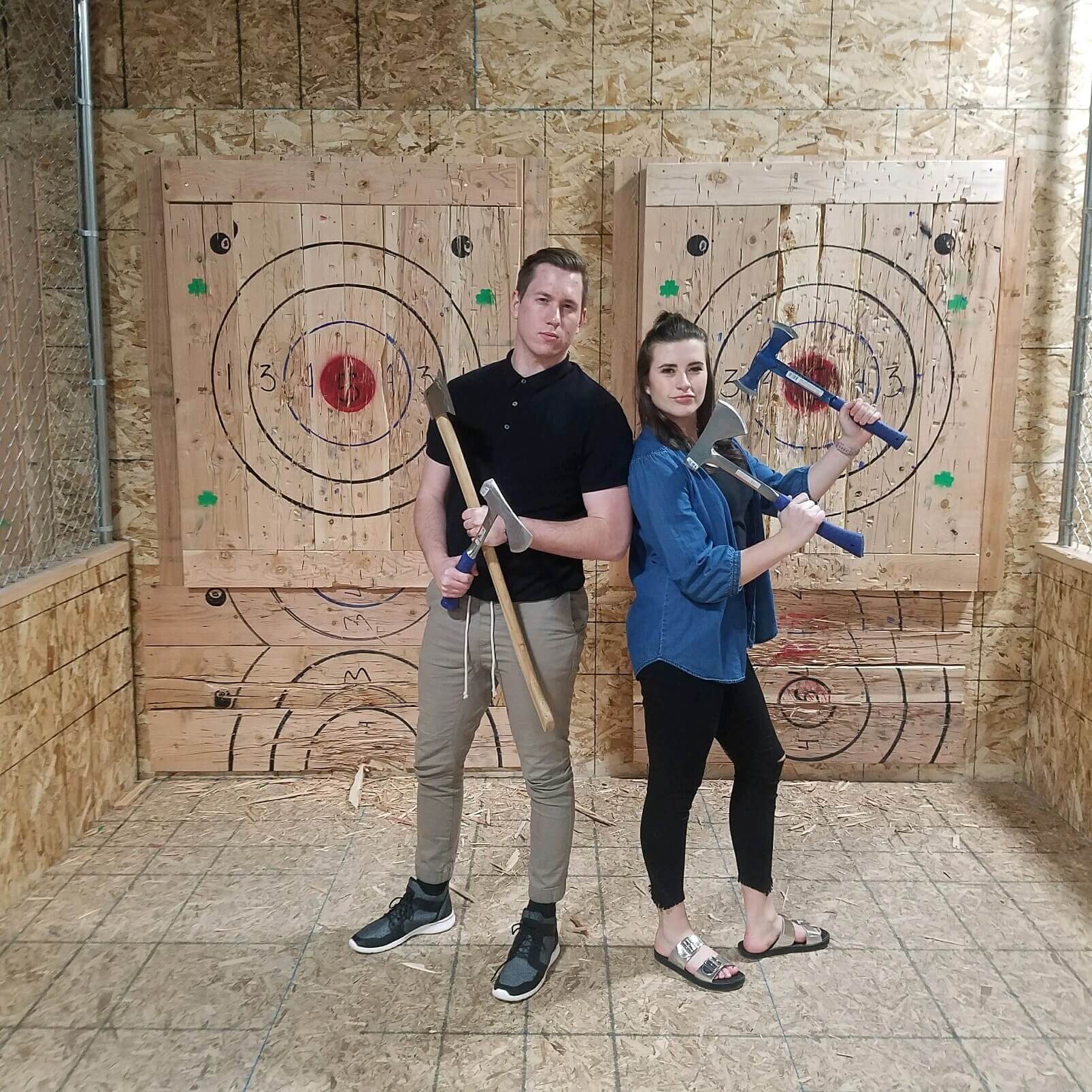Axe Throwing Denver: Extraordinary Business Occasions and Team Building
Axe Throwing Denver: Extraordinary Business Occasions and Team Building
Blog Article
The Fun of Axe Throwing: Exactly How This Sport Combines Skill and Adrenaline for a Good Time
Axe throwing has emerged as an astounding sport that masterfully intertwines the demand for specific ability with the thrill of adrenaline, offering individuals a distinct and engaging experience. The act of hurling an axe in the direction of a target requires focus and strategy, at the same time fostering an environment of sociability and pleasant rivalry. This interesting mix of mental focus and physical exertion has actually made axe tossing a preferred option for those seeking both leisure and a feeling of success. To absolutely appreciate the deepness and charm of this task, one must consider its origins, the needed tools, and the fundamental strategies that make sure both safety and security and enjoyment.
The Beginnings of Axe Throwing
Axe throwing, a recreational activity that has gained substantial popularity in recent years, traces its roots back to old times. The earliest documents of axe use in competitive contexts are discovered amongst the Celts and Vikings, that threw axes for sporting activity as well as in combat training.
Middle ages European warriors, especially throughout the Center Ages, practiced axe throwing as part of their martial training. The Francisca, a kind of tossing axe made use of by the Franks, became legendary for its deadly accuracy. This standard tool was developed to be tossed at adversary shields and shield, showcasing its dual utility in both sport and fight.
In more current history, axe throwing saw a revival in the logging camps of North America in the 19th and 20th centuries. Lumberjacks would participate in pleasant competition, examining their precision and strength by targeting at wood targets. This advancement from a survival skill to a recreational activity has paved the method for its contemporary renewal, with devoted places and leagues currently celebrating the sporting activity internationally.
Tools You Required
Recognizing the rich background of axe tossing boosts the recognition of the sporting activity's modern version. For entertainment and affordable axe throwing, the most frequently utilized type is the hatchet, normally evaluating in between 1.25 to 2 extra pounds with a handle size of about 16 inches.
Just as essential is the target. Law targets are constructed from timber, with softwood varieties like want or cottonwood being chosen for their ability to take in and hold the axe. The target is typically split into 5 concentric circles, each with a certain point value, to facilitate scoring.
Security gear, though often ignored, is important. Safety handwear covers can improve grasp and avoid sores, while closed-toed footwear are a must to shield feet from gone down axes (denver axe throwing). A well-lit, large tossing location, total with security obstacles, makes certain a regulated environment where individuals can concentrate on developing their skills.
Basic Techniques Described
Mastering the essential strategies of axe throwing is vital for both security and effectiveness. The leading hand should be positioned directly listed below the axe head, while the non-dominant hand sustains the end of the deal with.
Your leading foot ought to be a little forward, aligning with your target. This positioning aids in maintaining stability and guiding power accurately towards the target.

Safety First
Making sure safety and security in axe throwing is critical to creating an injury-free and satisfying experience. Safety and security measures start with the venue layout. A properly designed axe throwing facility attributes clear demarcations in between throwing lanes, sturdy backdrops to capture roaming axes, and non-slip floor covering to avoid crashes. Furthermore, sufficient lights is crucial to help participants maintain visual accuracy and spatial recognition.
Advantages of Axe Throwing
Axe tossing offers a myriad of advantages that expand past straightforward leisure. Literally, it gives a full-body workout, involving muscular tissues in the arms, shoulders, back, and core. The recurring movement of throwing the axe also enhances hand-eye coordination and great motor abilities. For those wanting to boost their overall physical fitness, axe throwing can serve as a interesting and dynamic form of workout.
Emotionally, axe throwing requires focus, technique, and precision, making it an outstanding means to develop cognitive abilities. The concentration needed to hit the target can work as a form of mindfulness, enabling individuals to clear their minds and decrease anxiety. This psychological involvement can be especially useful in helping people create far better analytic skills and psychological strength.
Socially, axe throwing is commonly appreciated in team settings, fostering team-building and friendship. Whether as part of a business occasion or a laid-back getaway with friends, the sport urges communication and cooperation. Furthermore, the common experience of learning and improving with each other can reinforce connections and produce long-term memories.
Verdict

The earliest documents of axe use in affordable contexts are located amongst the Celts and Vikings, who threw axes for sport as well as in battle training. Launch the axe when your hands are around at eye degree, permitting the axe's all-natural rotation to direct it in the direction of the target.
A well-designed axe throwing facility functions clear demarcations in between tossing lanes, durable backgrounds to capture stray axes, and non-slip floor covering to avoid crashes. Participants have to be advised on the right method to throw the axe and deal with, stressing managed, calculated movements over strong tosses.
In recap, axe tossing stands out as a sport that masterfully integrates adrenaline, accuracy, and skill.
Report this page